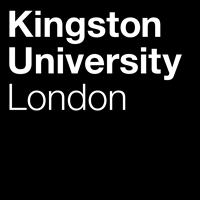Dr A Kelly, Dr Sianne Schwikkard, Prof D Wertheim
Applications accepted all year round
Self-Funded PhD Students Only
About the Project
The projection that within 50 years there will be more deaths from antimicrobial resistance than through cancer highlights the continual need for mining new and novel antimicrobials with activity against planktonic microbes and biofilms alike1. Whilst many novel compounds have shown antibacterial activity in vitro (including essential oils, herbs, spices, probiotics, lysins)2 few have been used therapeutically due in part due to issues with mammalian tolerance (selective toxicity and therapeutic range).
Several antimicrobial mixes have been identified at Kingston University capable of reducing the viability of S. aureus in vitro whilst showing inhibitory potential against other medically important Gram negatives (E. coli, Proteus mirabilis and Pseudomonas aeruginosa)3,4. These results were against planktonic cells; however, biofilms are assumed to be the ‘natural’ manner in which sessile communities of microorganisms survive under various environmental conditions5. Biofilms are awkward to remove once formed and display reduced susceptibility to antimicrobials6, and as a result are able to persist. They are a hazard as cells within the biofilm may break off and establish secondary populations elsewhere. Biofilms are important in both food industries and clinical/medical settings associated with production lines and surfaces in the former and artificial joint replacements and indwelling devices/catheters allied to bacteraemia and sepsis in the latter7,8. Their importance cannot be overstated.
This project would encompass the chemical characterisation and stability/surface testing of novel mixes, assessing activity in terms of inhibition as well as removal of biofilms produced by pathogens of both foodborne and medical importance. In addition, toxicity testing against mammalian cell lines, both epithelial and endothelial through the use of the Incucyte S3 Live-Cell analysis system would be undertaken. There is also scope to investigate the metabolic activity at the mammalian cell/microbial biofilm interface. The work would be carried out in the School of Life Sciences, Pharmacy and Chemistry at Kingston University and lead to the development of microbiological, microscopical and cell culture skills needed to carry out the research.
References
1. O’Neill, J.O. (2016) Tackling drug resistant infections globally: final report and recommendations. (https://amr-review.org/sites/default/files/160525_Final%20paper_with%20cover.pdf)
2. Czaplewski et al., (2016) Alternatives to antibiotics – a pipeline portfolio review. The Lancet Infectious Diseases, 16 (2), 239-251
3. Gould, et al., (2009) Anti-microbial activities of pomegranate rind extracts: enhancement by cupric sulphate against clinical isolates of S. aureus, MRSA and PVL positive CA-MSSA. BMC Complementary and Alternative Medicine, 9:23; doi:10.1186/1472-6882-9-234.
4. Holloway et al., (2012) The effect of copper(II), iron(II) sulphate, and vitamin C combinations on the weak antimicrobial activity of (+)-catechin against Staphylococcus aureus and other microbes. Metallomics, 4 (12), 1280-1286
5. Percival, et al., (2012) Wound Repair and Regeneration, 20, 647–657
6. Bridier, et al., (2011) Resistance of bacterial biofilms to disinfectants: a review, Biofouling: The Journal of Bioadhesion and Biofilm Research, 27 (9), 1017-1032,
7. Bridier et al., (2015) Biofilm-associated persistence of food-borne pathogens. Food Microbiology 45, 167-178
8. Song, et al., (2013) A review of the scientific evidence for biofilms in wounds. Orthopedic Reviews, 5, 65-71.

 Continue with Facebook
Continue with Facebook

